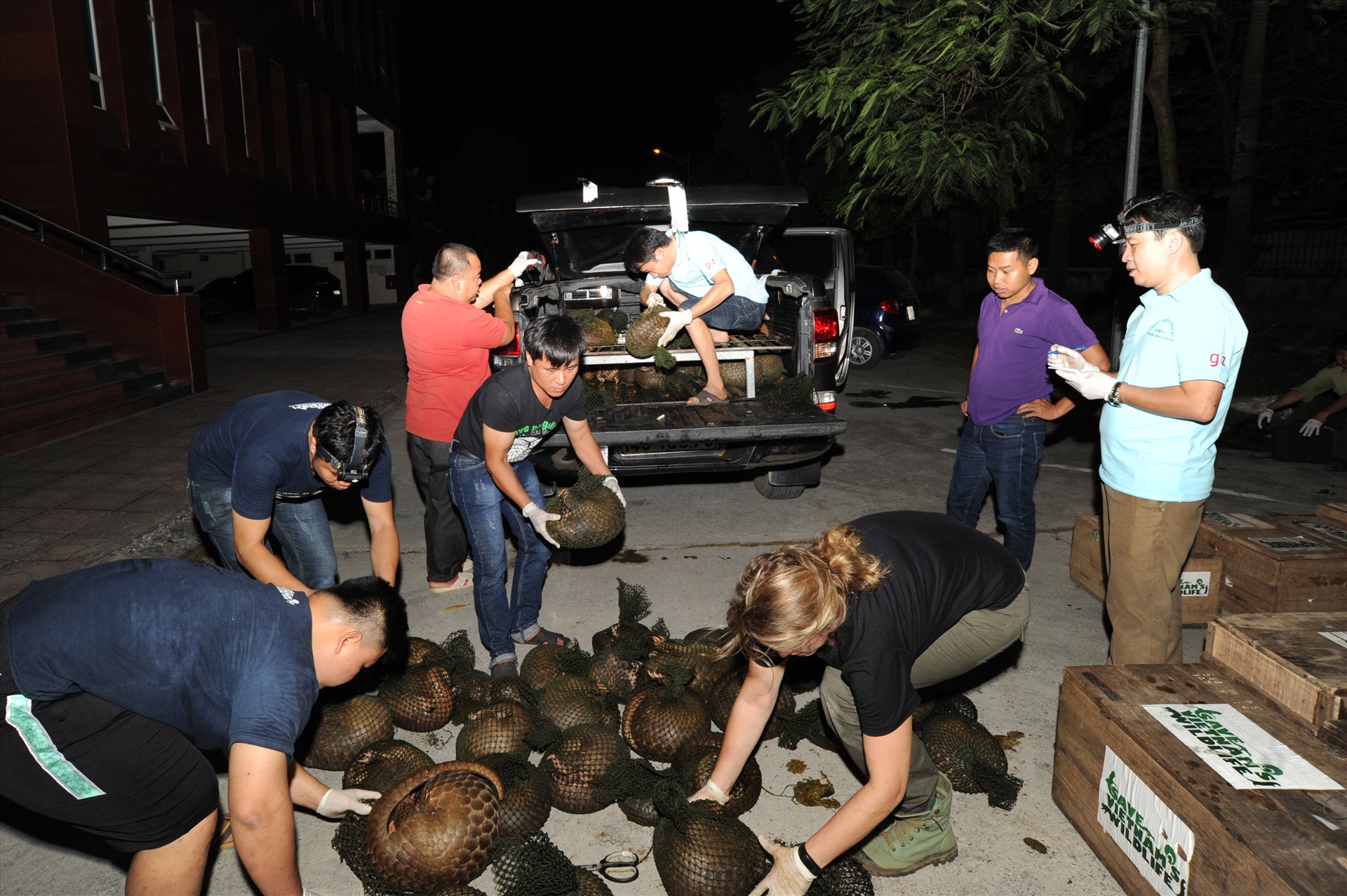
dr Pawin Padungtod speaking at the Advisory Conference to Support the Implementation of the Veterinary Specialist Management Agency System Capacity Building Project at All Levels for the Period 2021-2030. Photo: Pham Hieu.
Towards the end of illegal wildlife transport
Share with the newspaper Vietnamese culture on the role of control of cross-border movement of animals and animal products in preventing the risk of animal-to-human transmission of diseases on the sidelines of the advisory conference to support the implementation of the capacity-building project The System of Specialized Veterinary Management Agencies at At All Levels for the period 2021 – 2030 said Dr. Pawin Padungtod, senior technical coordinator at FAO, on June 23 that zoonoses are a disease.
“Accordingly, pathogens can be transmitted to humans from any animal species, not just wild animals. Transmission can occur as soon as humans come into contact with wild animals. So the more people come into contact with animals, the more transmission there is, the greater the possibility of diseases being transmitted.”
The FAO representative said that wild animals usually live in the wild and therefore there are very few opportunities to interact with humans. So the only way for wildlife to come into contact with humans is through trade and consumption when humans hunt wildlife.
However, Mr Pawin said that moving wildlife across the border is another matter related to legality and we need to better control and manage illegal wildlife movements to help minimize human-wildlife contact and reduce the risk of disease transmission reduce.

The only way for wildlife to come into contact with humans is through trade and consumption when humans hunt wildlife. Picture: SVW.
To prevent the risk of disease transmission from animals to humans, countries in the ASEAN region, including Vietnam, need to Pawin educate the community about the risk of diseases caused by wildlife that can pose a threat to public health.
“We need a deeper understanding of the risks that can arise so that people can proactively prevent and minimize the risk of disease spreading,” Mr Pawin said.
In addition, the FAO official said that in order to end all illegal wildlife trade, countries must take measures to tighten controls on wildlife transportation.
In addition, countries must assess the risk of disease transmission from legally-captured wild animal species to assess the risk of disease emergence and transmission.
Veterinary medicine ensures a balance between farmers’ livelihood and health
dr Reporting on FAO’s decision to adopt the One Health approach as the main strategy to implement the Safe Asia Project for the Global Environment (SAFE), Pawin said the One Health program is a collaborative effort to optimize human health and the environment . The health and well-being of people, animals and ecosystems are interrelated and interdependent.
“For FAO, One Health is one of the main ideas behind almost every activity. “It’s not just about One Health and how we use it, but also how we can fight emerging epidemics,” stressed Mr. Pawin.

One Health can address many issues such as: B. sustainable livestock farming, antibiotic resistance, emerging diseases or potential future pandemics. Picture: Nguyen Sang.
Accordingly, the One Health program can solve many problems such as sustainable livestock farming, antibiotic resistance, emerging diseases or potential pandemics in the future.
“With Project SAFE, this is an opportunity for us to partner with wildlife and ecosystem health communities in Vietnam to bring together people who care about animal and ecosystem health. “This assesses the risk of developing diseases and the risk of transmission,” said an FAO official.
Furthermore, in addition to reducing illegal wildlife movement across borders, FAO is always interested in livelihoods, food security and improving the welfare of local people living near borders.
“We understand the needs of indigenous people in some areas who currently rely on wildlife for their livelihoods. “However, there is also a need to focus on the risks that may impact human health and the ecosystem,” said Dr. Pawin.
According to Mr Pawin, there is a need to increase the use of farmer protective equipment on wildlife farms to balance people’s health and livelihoods in order to better manage the waste from the farm. At the same time, there is a need to minimize and reduce livestock in a breeding facility.

